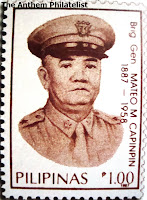"God Bless Africa", former National Anthem of Zimbabwe, Namibia, Ciskei and Transkei

"Nkosi Sikelel' iAfrika" ("God Bless Africa" in Xhosa), is part of the joint national anthem of South Africa since 1994, which was originally composed as a hymn by a Methodist mission school in Johannesburg teacher, Enoch Sontonga in 1897.
For decades during the apartheid regime it was considered by many to be the unofficial national anthem of South Africa, representing the suffering of the oppressed. In 1994 after the fall of apartheid, the new President of South Africa Nelson Mandela declared that both "Nkosi Sikelel' iAfrika" and the previous national anthem, "Die Stem van Suid-Afrika" ("The Voice of South Africa") would be national anthems.
While the inclusion of "Nkosi Sikelel' iAfrika" rejoiced in the newfound freedom of many South Africans, the fact that "Die Stem" was also kept as an anthem even after the fall of apartheid, signified to all that the new government under Mr Mandela respected all races and cultures and that an all-inclusive new era was dawning upon South Africa. In 1996, a shortened, combined version of the two anthems was released as the new South African National Anthem under the constitution of South Africa.
With different lyrics, the hymn is also the national anthem of both Tanzania and Zambia, and was formerly the anthem of Zimbabwe, Namibia. The "independent black homeland", Ciskei and Transkei also adopt it as their national anthem during the apartheid era. Outside of Africa, the hymn is perhaps best known as the long-time (since 1925) anthem of the African National Congress (ANC), as a result of the global anti-Apartheid movement of the 1970s and 1980s, when it was regularly sung at meetings and other events. It became part of South Africa's national anthem in 1994, following the ANC's victory in the country's first multi-racial elections.
The first part of the hymn has appeared in the hymnbook of the Evangelical Lutheran Church of Finland since 1985 with lyrics by Jaakko Löytty.
Nkosi Sikelel' iAfrika, was originally composed as a hymn in 1897 by Enoch Sontonga, a teacher at a Methodist mission school in Johannesburg. The words of the first stanza were originally written in Xhosa as a hymn. In 1927 seven additional Xhosa stanzas were added by the poet Samuel Mqhayi.
Solomon Plaatje, one of South Africa's greatest writers and a founding member of the ANC, was the first to have the song recorded in London, 1923.
A Sotho version was published in 1942 by Moses Mphahlele. Rev. John L. Dube's Ohlange Zulu Choir popularised the hymn at concerts in Johannesburg, and it became a popular church hymn that was also adopted as the anthem at political meetings.
It has also been recorded by Paul Simon and Miriam Makeba, Ladysmith Black Mambazo, Boom Shaka, Osibisa, Oliver Mtukudzi (the Shona version that was once the anthem of Zimbabwe) and the Mahotella Queens. Boom Shaka, a prominent South African kwaito group, performed the anthem in kwaito style, a popular South African genre influenced by hip-hop. The interpretation was controversial, and viewed by some as a commercial subversion of the anthem; Boom Shaka counter that their version represents liberation and introduces the song to younger listeners.
The postcard above features the lyrics of "God Bless Africa"






